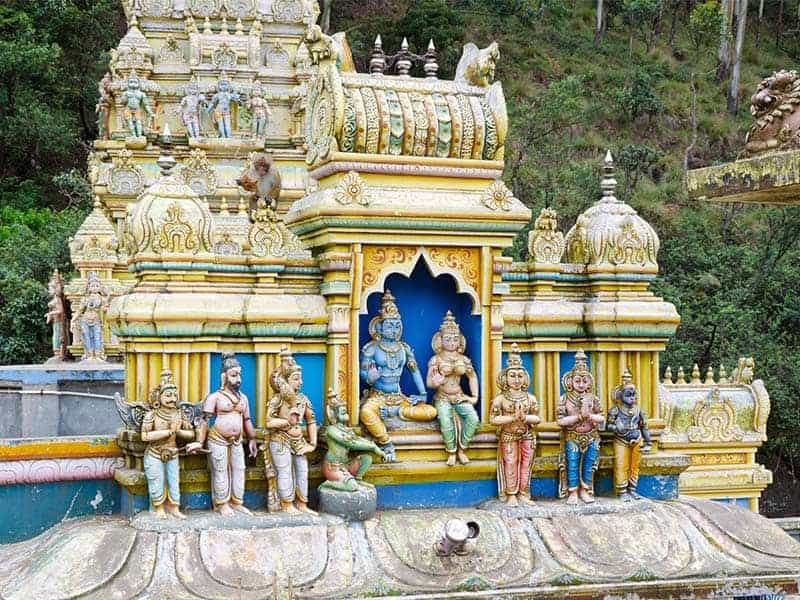Located in the Central Province, the Seetha Amman Temple is the only place of worship dedicated to Lady Seetha, the pious and chaste wife of Lord Rama and one of the primary protagonists of the Ramayana. It is located in a village named Seetha Eliya and surrounded by the wonderful misty cloud forests of Nuwara Eliya on all sides. Nuwara Eliya is filled with beautiful places to see, and this is one of them. The temple is modern, having been built by the Seetha Amman Temple Trust but it is supposed to have once been part of King Ravana’s sprawling city. However just like almost the entire story and its events, there is zero evidence to suggest that there was anything here at all during the early Indian Iron Age, let alone part of a large palace or urban complex as described in the story.
According to a few scholars, including archaeologist S.U. Deraniyagala suggested that these supposed Ramayana sites might be responsible for making political beliefs go haywire both among the local factions and those in India.
Indeed at the time of the Seetha Eliya projects there was a great deal of opposition, adding that it might turn an otherwise largely Buddhist region into a veritable “Ramayanapura.” In the absence of any physical evidence of the story and its events there is some sense to these strange suggestions although not much has actually transpired due to the temple having been constructed.
It is almost inexplicable that an entire age be lost to the elements if there was indeed a highly organized civilization in this area during the 9th Century BC.
Like almost all Ramayana-based sites in the country, it is merely a case of those with an interest in the myths transferring these locations into the modern world by using the folklore surrounding the events of the epic. There have been little idols uncovered here. Among them is said to be an idol of Seetha herself but it is hard to say that Indeed certain archaeologists and scholars wonder if the mythological kingdom of “Lanka” even existed at all, putting forward the theory that it was in reality a region in India itself, namely the Vindhya Mountains of the south of the subcontinent.
It is, however, quite fun to dream and speculate and this is exactly what the epic offers us of the modern world. We can actually build up a whole Rakshasa civilization with ties to the ancient Indian states of the time based on the descriptions featured in the epic-after all Ravana went to India more than once in the story and Lanka was not originally his; it was, as the stories put it, his half-brother Kubera’s kingdom- and put them as being an unusually advanced civilization that managed to dominate their region, only to become vassals and respectful supporters of the Indian states. Ravana’s younger brother Vibhishana was, after all, placed on the throne by Rama after betraying his people and he was even featured in a cameo role in the Mahabharata at King Yudhistira’s coronation ceremony. Plus, the Seetha Amman temple still remains as an icon of the Nuwara Eliya District.
Written by Vasika Udurawane for Travel Lanka Compass



0 Comment